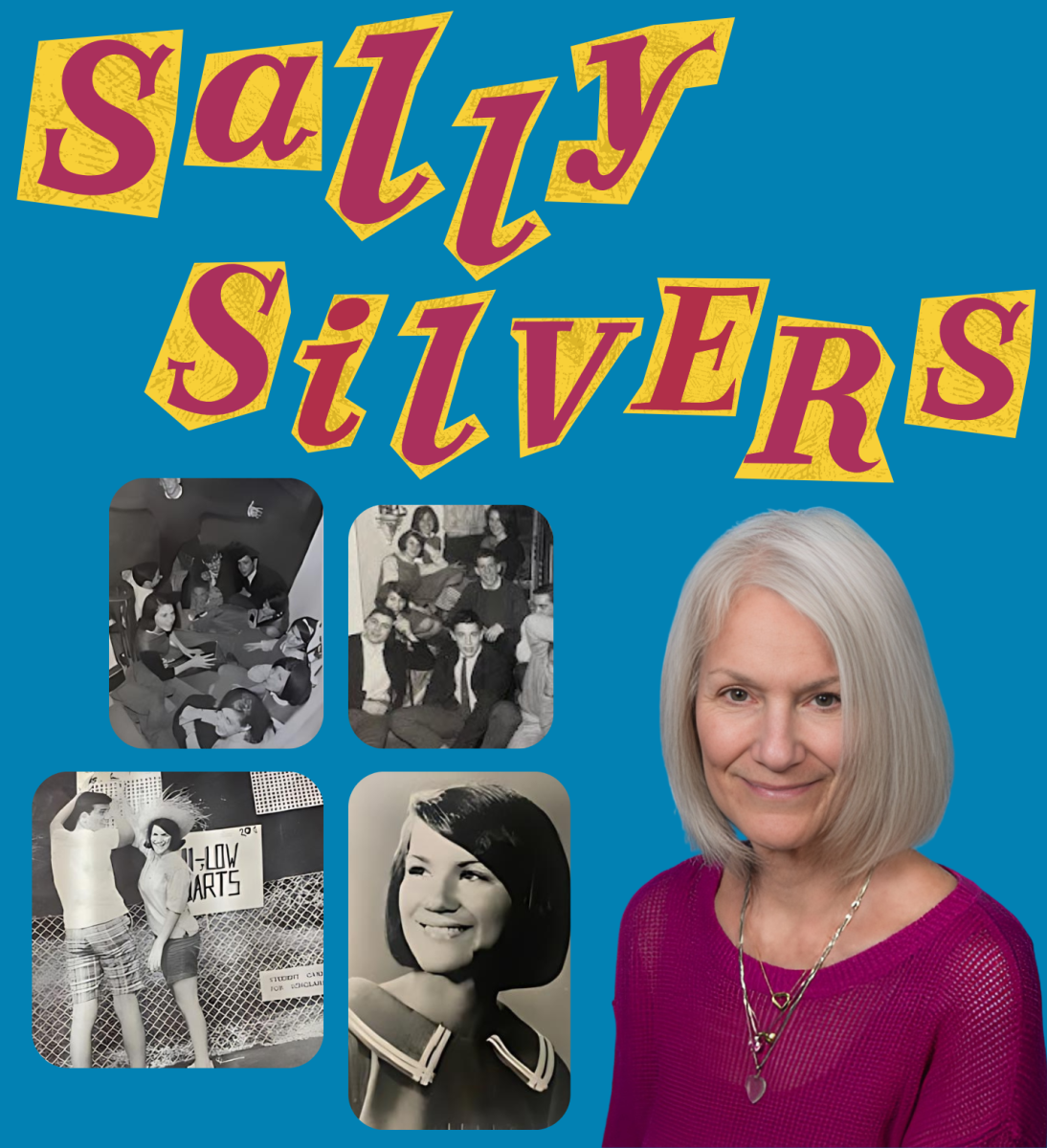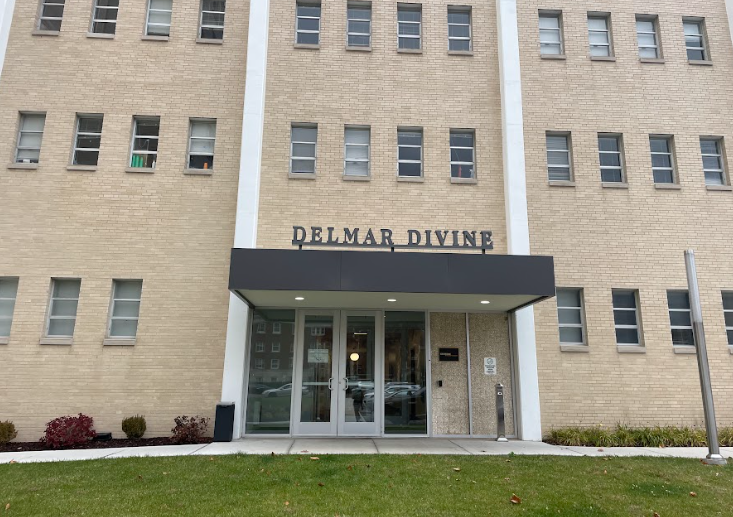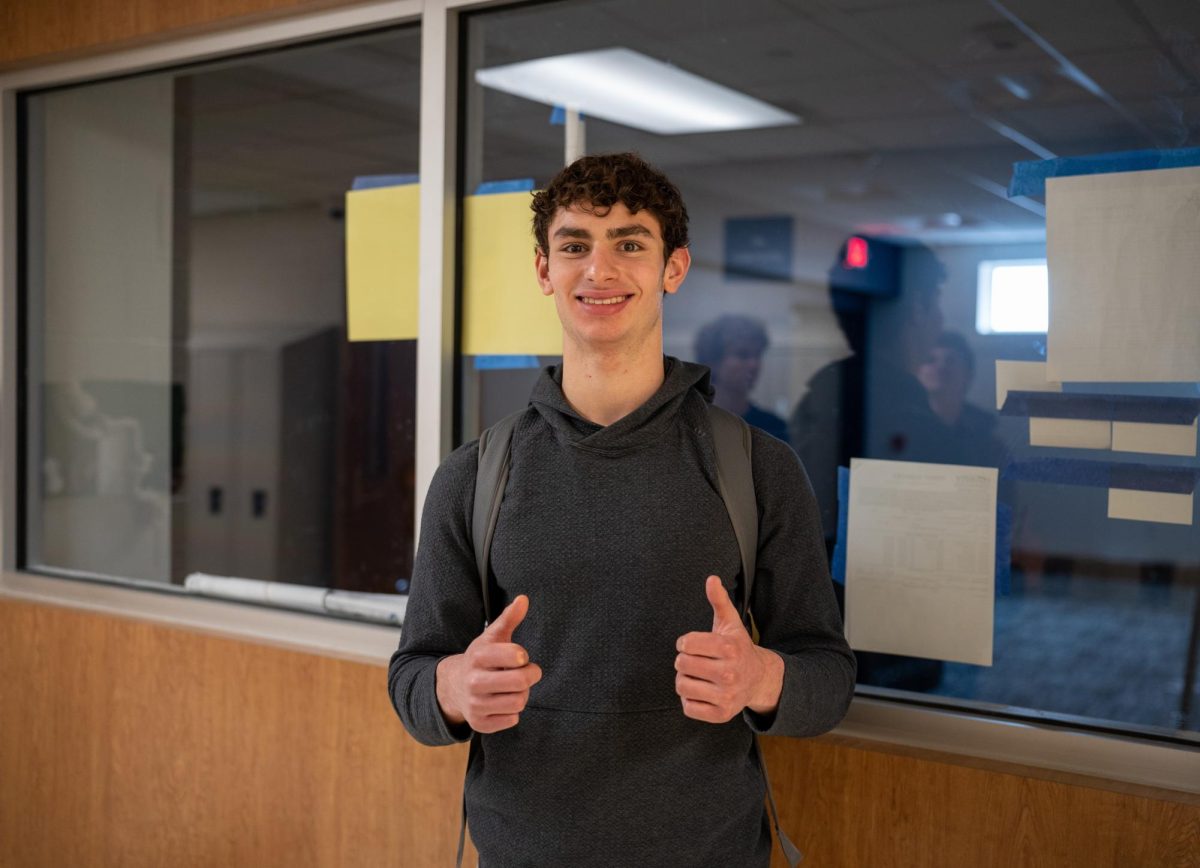Just about all students have been bored by school at some point in their lives. They might be enrolled in a class there, the subject matter doesn’t interest them, or they might even be in a class that moves to slowly for them. However, for most of these disinterested students, nothing really comes of their fleeting moments of angsty dreams of leaving school behind.
On the other hand, a small but increasing subset of students chooses to leave traditional schooling behind by becoming homeschooled or ‘unschooled,’ an alternate path of learning outside of a traditional school. Clayton resident Selena Wilkinson used to attend Wydown Middle School, but left after her first semester of eighth grade to become unschooled. She decided to take the unschooling route instead of more traditional homeschooling to create her own curriculum.

“Homeschooling, I kind of feel, is when your parents set up what you’re going to learn, keep track of what you’re learning, make sure you do all your work, and they have a curriculum and maybe even make you take tests on it,†Wilkinson said. “Unschooling is more self-directed. There’s definitely input from other people, but you mostly decide for yourself what you want to learn and you go about finding your sources and your curriculum by yourself. You set up your own timeframe and stuff.â€
Wilkinson uses a combination of self-teaching, local classes, and online classes to teach herself what is essentially the equivalent of a high school curriculum. Now a sophomore, Wilkinson has taken classes in a variety of different forms. She’s a member of the St. Louis Homeschool Network, so she takes some of her classes in the homes of other homeschooled teens in the area.
However, she reserves her favorite subjects for self-studying.
“I teach myself a lot of history and literature stuff because I feel like those are my strong suits and I’m really interested in them,†Wilkinson said. “So I don’t need the extra push from other sources to get that stuff done.â€
Thus far, Wilkinson has felt her learning experience has become much more personal due to the smaller scale of a school environment in her life.
“There’s definitely stuff that is like school,†Wilkinson said. “But I feel like I’m more respected as a person than I was in school. Like, my opinion means more. In school, the teacher was just there to teach us and didn’t really want to learn from us, too.â€
Jonah Lindblad, a current sophomore at CHS, was homeschooled from the fourth grade through freshmen year. While he was homeschooling, Lindblad was initially taught by his mother (a former professor at UMSL) with a more flexible learning structure.
“The first year I did it, it was sort of a build your own curriculum thing that we did,†Lindblad said. “While that was pretty fun, there was just kind of a lack of motivation with it and it just kind of felt like you could slack off easily.â€
After this method proved to be less than satisfactory, Lindblad, moved on to correspondence programs with structured curriculums as he got older.
“We used a correspondence program,†Lindblad said. “So, basically, you pick a curriculum; you do the curriculum. It was actually, in my opinion, a little more difficult homeschooling and more challenging than it is here, which I know surprises some people. When I came here, my classes were way easier because you actually have a lecturer and someone to ask more about [the material]. Whereas, at home, I just had a textbook so I could only read, read, read.â€
Although he has now fully transitioned to a more traditional educational route, there are still some things he misses about his homeschooling experience. For example, it was difficult for him to adjust to a less personalized learning schedule.
“If I was studying one thing and I really didn’t get it that well, I could look over it as many times I wanted to until I actually got it and understood the subject fully,†Lindblad said. “Whereas, here, you do it, but then you kind of have to move on with the rest of the class even if you don’t get it. Or, if you get something really quickly and you understand the subject, then you can go on to the next part. But, if everyone else is having trouble, then you have to sit there on the same subject until everyone else understands it.â€
Lindblad’s main motive for leaving traditional schooling was the lack of challenges available to him in the Webster Groves School District, where he attended elementary school.
“They wanted me to skip a grade or two there,†Lindblad said. “Which would have been really awkward. So, I really didn’t want to do that and it seemed like homeschooling was a better alternative because even skipping a year or two in their classes wouldn’t do anything for me anyway.â€
Wilkinson also left because she didn’t feel challenged in some of her classes at Wydown and found memorization and test-taking to be too prominent in the curriculum for her taste. However, the social environment at Wydown was what pushed her to homeschooling after a long deliberation.
“There’s a lot of social pressure, especially in middle school, that I didn’t want to deal with, like being popular instead of being myself,†Wilkinson said. “Those sorts of things are easier once you’re not in school, I think.â€
Wilkinson was also put off by the new habits developing among her peers that she wished to avoid.
“Well, there was a lot of pressure to start drinking and get involved in sexual stuff and I wasn’t really ready for that when I was at that part of eighth grade,†Wilkinson said. “I didn’t want to do anything that I would regret when I was young. There was also a lot of pressure to wear certain clothes and dress like everyone else, which definitely continues in life, but it’s really evident when you’re young.â€
Although she found the social aspect of homeschooling to be difficult at first, Wilkinson feels that she has met her stride socially.
“I went to a camp for homeschoolers and unschoolers and some kids who go to regular school,†Wilkinson said. “I met a lot of homeschooled kids and, like I said, I’m in Homeschool Network, so there’s a lot of other teenagers in there. I hang out with a lot of kids who go to school now that I’ve met through art classes, sports, and I went to Clayton with kids, obviously, so a lot of them. I don’t feel like I have social isolation, but I could see how it could be a problem for a lot of homeschooled kids.â€
Lindblad, on the other hand, felt a lot of social isolation while he was homeschooled.
“When you’re homeschooled it’s really socially isolating,†Liblad said. “Like, you don’t get to see people very often and it can get really depressing… It’s kind of frustrating because the homeschooling groups weren’t my type of people because a lot of people that are homeschooling are homeschooling because they’re socially awkward or have some kind of disability that would cause them not to be able to do social interaction very well.â€
Lindblad was also concerned that it would be difficult for him to get into college as a homeschooled student.
“Colleges are starting to recognize homeschoolers more and more as time goes on,†Lindblad said. “But it isn’t a huge amount of colleges who do that and is a lot better on the transcript to say, ‘Here’s this absolute proof that I took this accredited program and I got this high of a grade and it’s an AP class.’â€
On the College Board website they write that homeschoolers are presented with many problems in the admissions process, including where they can get college recommendations if their parents are their teachers:
“In general, home–schooled students follow the same college admission process as students in public or private schools. However, they may have to fulfill some extra requirements… Some colleges admit many home-schooled students; others do not.â€
In addition to these problems, Lindblad found it difficult to find secular science programs and networks for nonreligious homeschooled students.
“It was really annoying because the teachers weren’t supposed to teach anything religious, but they would do it anyway because of how many in the classes believed that themselves,†Lindblad said. “I really kind of felt like a minority by not being religious, except for a few places where I found other nonreligious homeschoolers, but I had to look for something specifically.â€
Wilkinson has also noticed a dearth of science programs that teach evolution for homeschooled kids.
“I know lots of kids who have learned science from a religious-based program and it’s not exactly science in my book,†Wilkinson said. “So, especially for science, it’s hard to find curriculums that aren’t based around religion.â€
Although they’ve had similar experiences, Wilkinson still feels that she’s made the right decision and Lindblad has been happy to become an active part of the CHS community.
Wilkinson uses a combination of self-teaching, local classes, and online classes to teach herself what is essentially the equivalent of a high school curriculum. Now a sophomore, Wilkinson has taken classes in a variety of different forms. She’s a member of the St. Louis Homeschool Network, so she takes some of her classes in the homes of other homeschooled teens in the area.
However, she reserves her favorite subjects for self-studying.
“I teach myself a lot of history and literature stuff because I feel like those are my strong suits and I’m really interested in them,†Wilkinson said. “So I don’t need the extra push from other sources to get that stuff done.â€
Thus far, Wilkinson has felt her learning experience has become much more personal due to the smaller scale of a school environment in her life.
“There’s definitely stuff that is like school,†Wilkinson said. “But I feel like I’m more respected as a person than I was in school. Like, my opinion means more. In school, the teacher was just there to teach us and didn’t really want to learn from us, too.â€
Jonah Lindblad, a current sophomore at CHS, was homeschooled from the fourth grade through freshmen year. While he was homeschooling, Lindblad was initially taught by his mother (a former professor at UMSL) with a more flexible learning structure.
“The first year I did it, it was sort of a build your own curriculum thing that we did,†Lindblad said. “While that was pretty fun, there was just kind of a lack of motivation with it and it just kind of felt like you could slack off easily.â€
After this method proved to be less than satisfactory, Lindblad, moved on to correspondence programs with structured curriculums as he got older.
“We used a correspondence program,†Lindblad said. “So, basically, you pick a curriculum; you do the curriculum. It was actually, in my opinion, a little more difficult homeschooling and more challenging than it is here, which I know surprises some people. When I came here, my classes were way easier because you actually have a lecturer and someone to ask more about [the material]. Whereas, at home, I just had a textbook so I could only read, read, read.â€
Although he has now fully transitioned to a more traditional educational route, there are still some things he misses about his homeschooling experience. For example, it was difficult for him to adjust to a less personalized learning schedule.
“If I was studying one thing and I really didn’t get it that well, I could look over it as many times I wanted to until I actually got it and understood the subject fully,†Lindblad said. “Whereas, here, you do it, but then you kind of have to move on with the rest of the class even if you don’t get it. Or, if you get something really quickly and you understand the subject, then you can go on to the next part. But, if everyone else is having trouble, then you have to sit there on the same subject until everyone else understands it.â€
Lindblad’s main motive for leaving traditional schooling was the lack of challenges available to him in the Webster Groves School District, where he attended elementary school.
“They wanted me to skip a grade or two there,†Lindblad said. “Which would have been really awkward. So, I really didn’t want to do that and it seemed like homeschooling was a better alternative because even skipping a year or two in their classes wouldn’t do anything for me anyway.â€
Wilkinson also left because she didn’t feel challenged in some of her classes at Wydown and found memorization and test-taking to be too prominent in the curriculum for her taste. However, the social environment at Wydown was what pushed her to homeschooling after a long deliberation.
“There’s a lot of social pressure, especially in middle school, that I didn’t want to deal with, like being popular instead of being myself,†Wilkinson said. “Those sorts of things are easier once you’re not in school, I think.â€
Wilkinson was also put off by the new habits developing among her peers that she wished to avoid.
“Well, there was a lot of pressure to start drinking and get involved in sexual stuff and I wasn’t really ready for that when I was at that part of eighth grade,†Wilkinson said. “I didn’t want to do anything that I would regret when I was young. There was also a lot of pressure to wear certain clothes and dress like everyone else, which definitely continues in life, but it’s really evident when you’re young.â€
Although she found the social aspect of homeschooling to be difficult at first, Wilkinson feels that she has met her stride socially.
“I went to a camp for homeschoolers and unschoolers and some kids who go to regular school,†Wilkinson said. “I met a lot of homeschooled kids and, like I said, I’m in Homeschool Network, so there’s a lot of other teenagers in there. I hang out with a lot of kids who go to school now that I’ve met through art classes, sports, and I went to Clayton with kids, obviously, so a lot of them. I don’t feel like I have social isolation, but I could see how it could be a problem for a lot of homeschooled kids.â€
Lindblad, on the other hand, felt a lot of social isolation while he was homeschooled.
“When you’re homeschooled it’s really socially isolating,†Liblad said. “Like, you don’t get to see people very often and it can get really depressing… It’s kind of frustrating because the homeschooling groups weren’t my type of people because a lot of people that are homeschooling are homeschooling because they’re socially awkward or have some kind of disability that would cause them not to be able to do social interaction very well.â€
Lindblad was also concerned that it would be difficult for him to get into college as a homeschooled student.
“Colleges are starting to recognize homeschoolers more and more as time goes on,†Lindblad said. “But it isn’t a huge amount of colleges who do that and is a lot better on the transcript to say, ‘Here’s this absolute proof that I took this accredited program and I got this high of a grade and it’s an AP class.’â€
On the College Board website they write that homeschoolers are presented with many problems in the admissions process, including where they can get college recommendations if their parents are their teachers:
“In general, home–schooled students follow the same college admission process as students in public or private schools. However, they may have to fulfill some extra requirements… Some colleges admit many home-schooled students; others do not.â€
In addition to these problems, Lindblad found it difficult to find secular science programs and networks for nonreligious homeschooled students.
“It was really annoying because the teachers weren’t supposed to teach anything religious, but they would do it anyway because of how many in the classes believed that themselves,†Lindblad said. “I really kind of felt like a minority by not being religious, except for a few places where I found other nonreligious homeschoolers, but I had to look for something specifically.â€
Wilkinson has also noticed a dearth of science programs that teach evolution for homeschooled kids.
“I know lots of kids who have learned science from a religious-based program and it’s not exactly science in my book,†Wilkinson said. “So, especially for science, it’s hard to find curriculums that aren’t based around religion.â€
Although they’ve had similar experiences, Wilkinson still feels that she’s made the right decision and Lindblad has been happy to become an active part of the CHS community.






